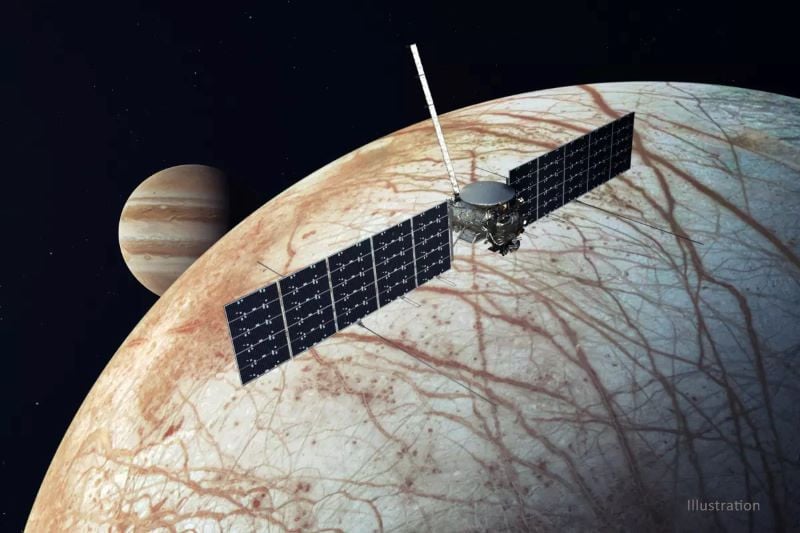NASA’s Europa Clipper has officially embarked on its 1.8-billion-mile journey to explore Jupiter’s icy moon, Europa, and search for signs of alien life. The spacecraft launched successfully aboard a SpaceX Falcon Heavy rocket from Cape Canaveral, Florida, on Monday morning.
With this mission, NASA has significantly reduced the risks involved, according to Jordan Evans, Europa Clipper project manager at NASA’s Jet Propulsion Laboratory. The spacecraft’s journey will not be direct; it will utilize a gravity assist by performing a flyby around Mars early next year and then looping back around Earth in late 2026 before heading toward Jupiter and its dynamic moon. The Europa Clipper is expected to arrive in 2030, where it will conduct scientific observations for more than four years. At the conclusion of the mission, the spacecraft will intentionally crash into one of Jupiter’s rocky moons to avoid contaminating Europa.
Originally scheduled for launch on October 10, the mission was postponed due to Hurricane Milton, requiring Clipper to remain secured in SpaceX’s hangar. Fortunately, the weather on Monday was clear over Florida’s space coast, allowing for a successful lift-off.
Scientists have long advocated for a mission to Europa, especially after findings from NASA’s Galileo probe, which suggested the existence of a subsurface global ocean heated by Jupiter’s gravitational forces. “Scientists have urged NASA to search for signs of life near Jupiter. Now it’s happening,” added Evans.
Given the presence of water, a heat energy source, and potentially organic compounds, Europa is considered a promising habitat for alien life. As Clipper orbits Jupiter, it will conduct dozens of flybys of Europa, employing its suite of scientific instruments to study the moon’s subsurface ocean dynamics and search for organic compounds that could indicate life.
The $5 billion Europa Clipper mission was designed and constructed by NASA’s Jet Propulsion Laboratory in La Cañada Flintridge, marking it as the largest planetary probe ever built by the agency.
SpaceX utilized its Falcon Heavy rocket, a variant of the Falcon 9 equipped with additional boosters, to launch the spacecraft. While the company typically attempts to recover its boosters, this time they allowed them to fall into the ocean, expending all their propellant to ensure Clipper’s escape from Earth’s gravity. However, the fairings that protected the spacecraft during launch will be recovered.
“The community is really fortunate to have new rockets with these heavy-lift capabilities available to them,” said Matthew Shindell, planetary science and exploration curator at the Smithsonian National Air and Space Museum. “If you were trying to launch a mission like this a decade ago, you couldn’t do it.”



